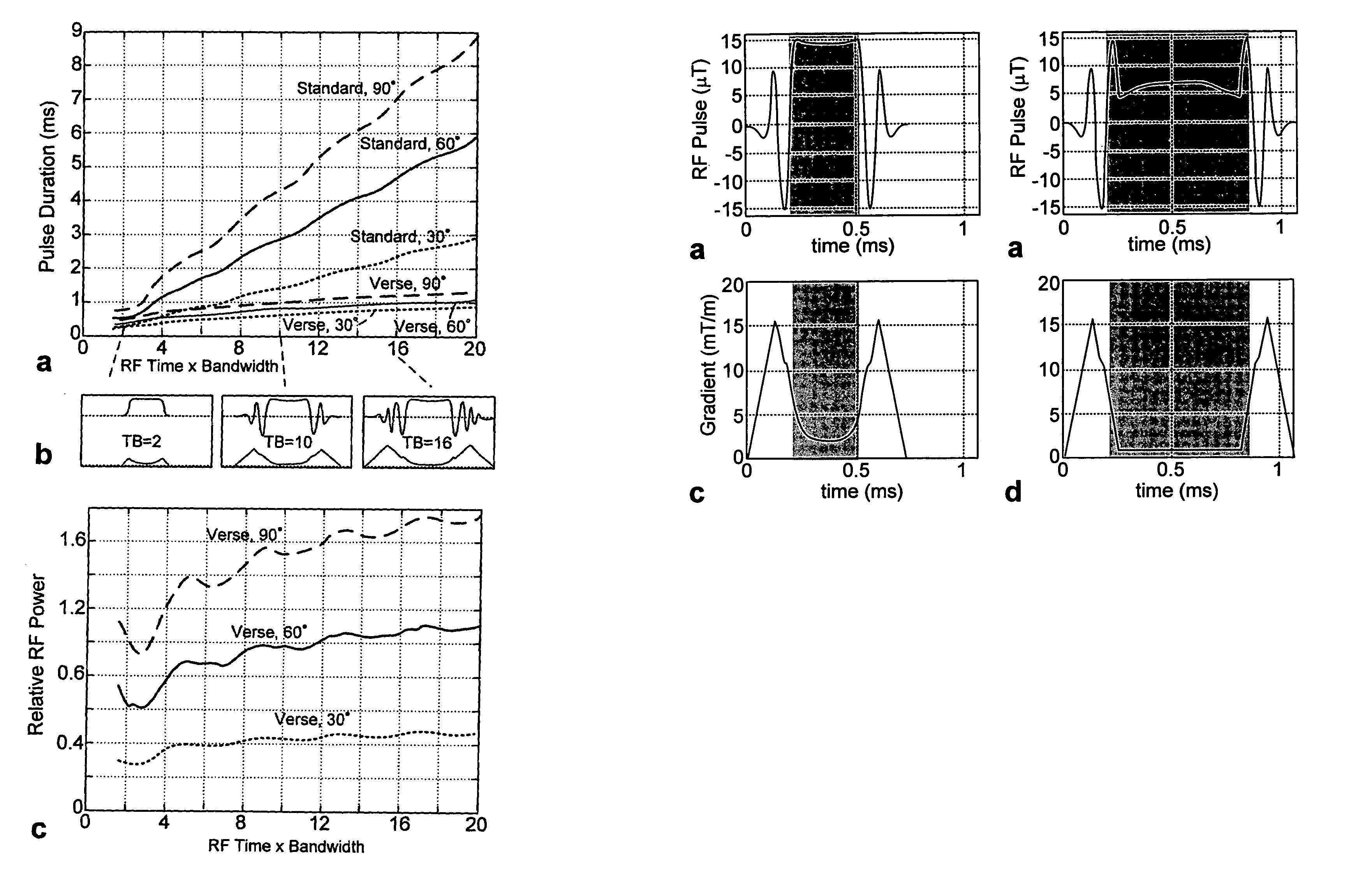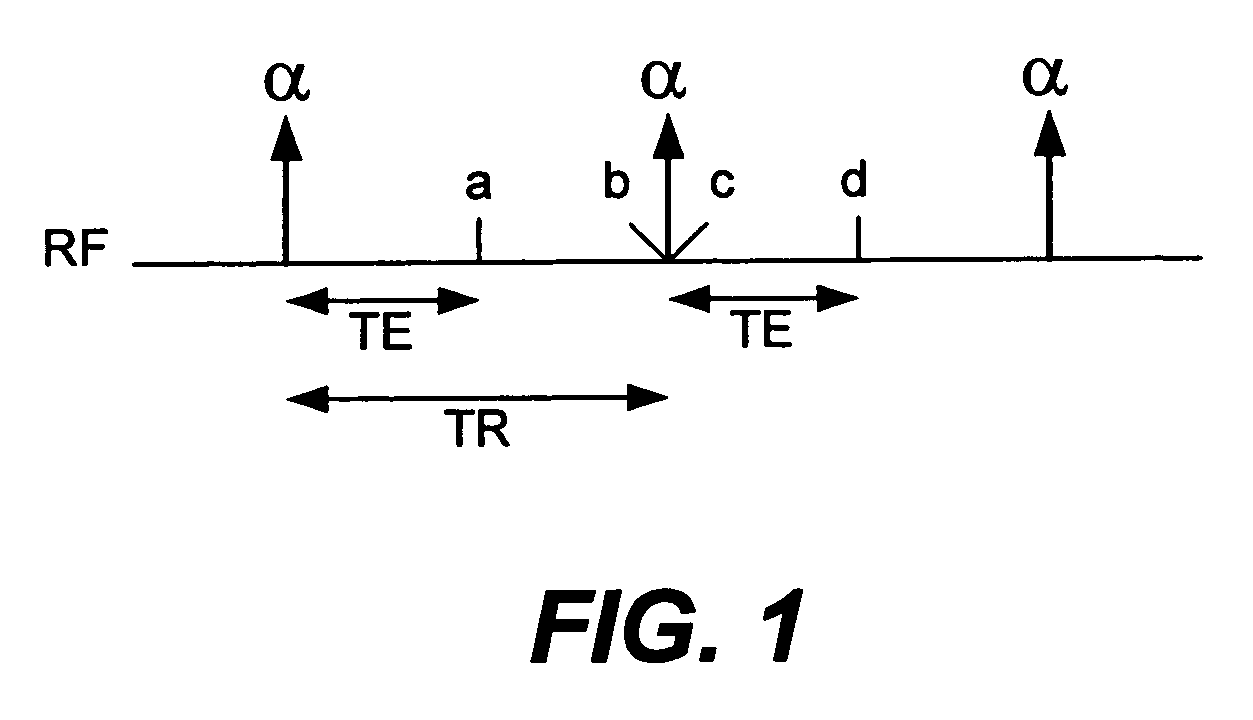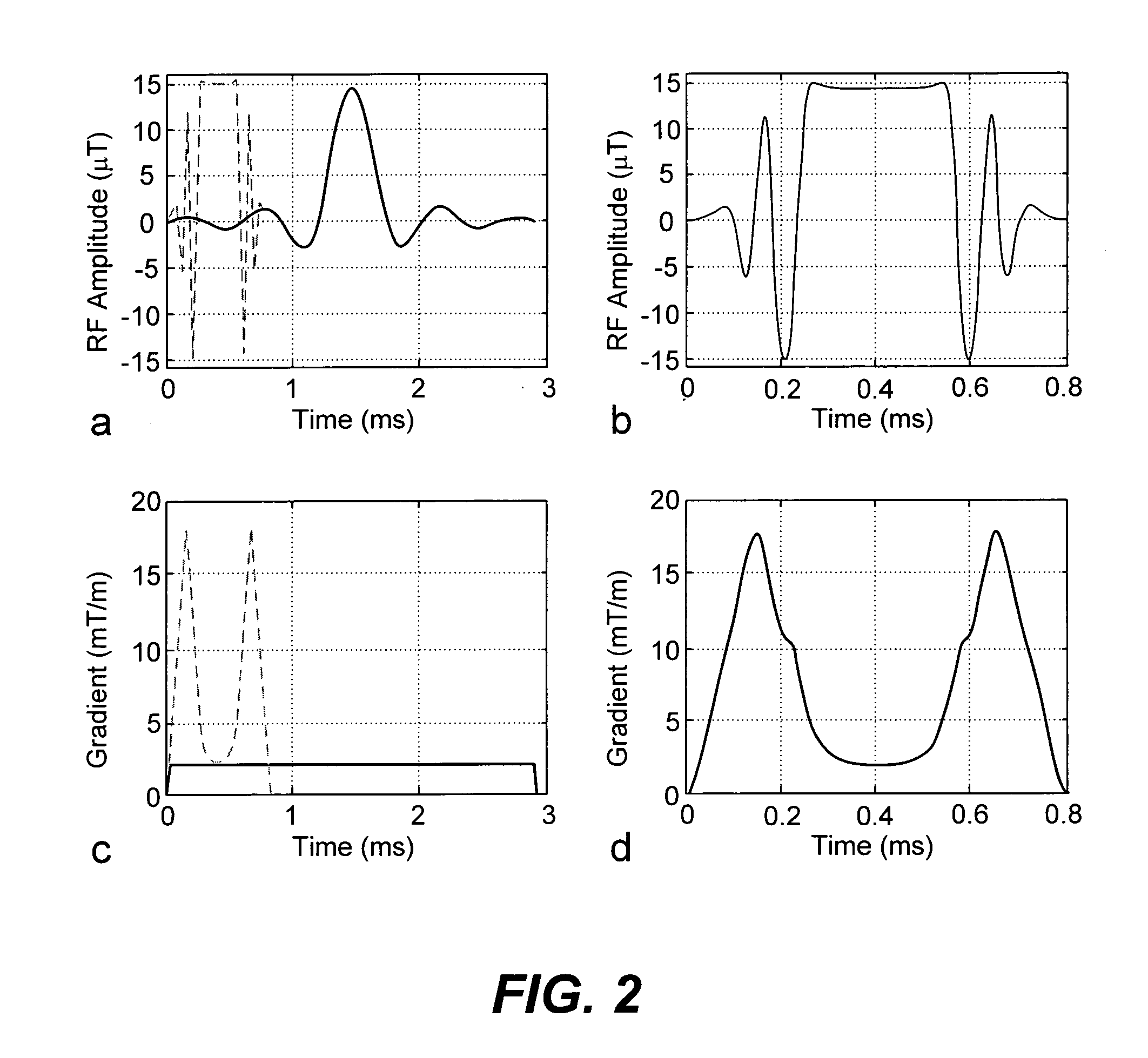Reduced-time variable rate excitation pulses for rapid MRI
a time variable rate and excitation pulse technology, applied in the field of magnetic resonance imaging (mri), can solve the problems of the inability to accurately detect the lipid-based tissue, etc., and achieve the effect of improving the imaging slab profile and more rapid imaging
- Summary
- Abstract
- Description
- Claims
- Application Information
AI Technical Summary
Benefits of technology
Problems solved by technology
Method used
Image
Examples
Embodiment Construction
[0021]The invention provides a RF pulse and time varying gradient pulse pair which reduces pulse duration and repetition times with improved imaged slab profiles in SSFP imaging sequences.
[0022]We addressed the design of the selective excitation pulses using a k-space formalism that views excitation from a frequency-domain paradigm: the gradient waveform describes a trajectory through excitation k-space, while the RF waveform deposits energy at different spatial frequencies. The Shinnar-Le Roux (SLR) pulse design algorithm uses a more accurate mapping between the RF waveform and the excitation profile. SLR pulse design is very powerful, as it employs existing digital filter design principles for selective RF pulse design. For example, with the use of SLR pulse design, it is possible to design the optimal equi-ripple profile for a given time×bandwidth product (TB). We use TB as a measure of slice profile sharpness, since TB is proportional to the ratio of the slice width (full-width ...
PUM
 Login to View More
Login to View More Abstract
Description
Claims
Application Information
 Login to View More
Login to View More - R&D
- Intellectual Property
- Life Sciences
- Materials
- Tech Scout
- Unparalleled Data Quality
- Higher Quality Content
- 60% Fewer Hallucinations
Browse by: Latest US Patents, China's latest patents, Technical Efficacy Thesaurus, Application Domain, Technology Topic, Popular Technical Reports.
© 2025 PatSnap. All rights reserved.Legal|Privacy policy|Modern Slavery Act Transparency Statement|Sitemap|About US| Contact US: help@patsnap.com



